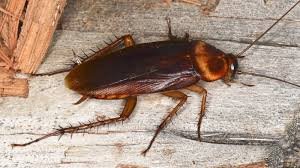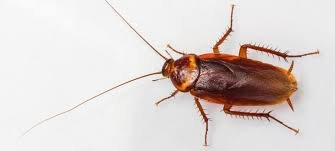The term palmetto bug typically refers to a type of cockroach commonly found in the southeastern United States. While many people are familiar with these pests, not everyone understands their biology, behavior, and the challenges they pose. This article aims to provide an in-depth exploration of the palmetto bug, including its characteristics, habitat, behavior, and effective management strategies.
Table of Contents
What is a Palmetto Bug?
The palmetto bug is most often identified as the American cockroach (Periplaneta americana). This species is one of the largest cockroaches, typically measuring between 2 to 4 inches in length. They have a reddish-brown color with a yellowish margin around the pronotum, which is the shield-like structure behind their head. These insects are often mistaken for other cockroach species, but their size and coloration make them relatively easy to identify.
Habitat and Distribution
The palmetto bug is commonly found in warm, humid environments, making the southeastern United States an ideal habitat. They are often seen in urban areas, where they thrive in the warmth of buildings and the abundance of food sources. Typically, these pests prefer dark, moist locations, such as basements, kitchens, and bathrooms. They can also be found in outdoor areas, particularly in leaf litter and mulch.
Life Cycle of the Palmetto Bug
Understanding the life cycle of the palmetto bug is essential for effective management. The life cycle consists of three stages: egg, nymph, and adult.
- Egg Stage: The female palmetto bug produces an egg case, known as an ootheca, which contains around 30 to 40 eggs. This case is often deposited in dark, hidden locations to protect it from predators.
- Nymph Stage: After about two months, the eggs hatch into nymphs. These immature cockroaches resemble smaller versions of adults but lack wings. Nymphs undergo several molts as they grow, requiring food and moisture to survive.
- Adult Stage: After approximately six months, nymphs mature into adults. Adult palmetto bugs can live for up to a year and are capable of reproducing multiple times within their lifespan.
Behavior and Diet

Palmetto bugs are primarily nocturnal, meaning they are most active at night. During the day, they seek shelter in dark, hidden areas to avoid light and predators. Their diet is omnivorous; they will eat a variety of organic materials, including decaying plant matter, food scraps, and even paper products. This adaptability in diet helps them thrive in various environments.
Why Are Palmetto Bugs a Concern?
While palmetto bugs are not known to transmit diseases directly, their presence can pose health risks. They are known to carry bacteria and allergens that can affect indoor air quality. Their droppings, saliva, and skin shed can trigger asthma and allergy symptoms in sensitive individuals.
Moreover, the sight of a palmetto bug scuttling across a kitchen floor can be unsettling for homeowners, leading to anxiety and discomfort. Their ability to reproduce quickly makes them a persistent problem if not managed effectively.
How to Identify a Palmetto Bug Infestation
Identifying a palmetto bug infestation early is crucial for effective control. Signs of an infestation include:
- Sightings: Frequent sightings of live or dead cockroaches, especially in kitchens and bathrooms.
- Droppings: Small, dark droppings resembling pepper grains are a telltale sign of cockroach activity.
- Egg Cases: Finding egg cases, often located in hidden areas, indicates a breeding population.
- Unpleasant Odor: A musty smell can be associated with larger infestations.
Prevention Strategies for Palmetto Bugs
Preventing a palmetto bug infestation involves implementing various strategies to eliminate their food sources and habitat. Here are some effective prevention tips:
- Seal Entry Points: Inspect your home for gaps and cracks where palmetto bugs could enter. Use caulk or weatherstripping to seal these openings.
- Maintain Cleanliness: Regularly clean kitchens and dining areas to remove food crumbs and spills. Ensure that trash cans are tightly sealed.
- Reduce Moisture: Since palmetto bugs are attracted to moisture, fixing leaks and using dehumidifiers can help create an environment that is less hospitable to them.
- Proper Food Storage: Store food in airtight containers and avoid leaving pet food out overnight.
Effective Control Measures
If prevention strategies fail and an infestation occurs, there are several control measures that can be implemented to manage palmetto bugs effectively:
- Boric Acid: This common insecticide is effective against cockroaches. Apply it in areas where you have seen palmetto bugs, but ensure it is out of reach of pets and children.
- Gel Baits: Commercial cockroach baits attract and kill palmetto bugs. Place these baits in areas where you suspect activity.
- Insecticidal Sprays: Use insecticidal sprays specifically labeled for cockroach control. Ensure that you follow the manufacturer’s instructions for safe application.
- Professional Pest Control: If the infestation is severe, consider hiring a pest control professional. They have access to stronger treatments and can help eliminate the problem effectively.
Myths and Misconceptions About Palmetto Bugs

There are many myths and misconceptions about palmetto bugs that can lead to confusion and unnecessary fear. Some common myths include:
- They Fly Into Your Hair: While palmetto bugs can fly, they are not known to intentionally fly into people’s hair. Most often, they prefer to scuttle along surfaces.
- They’re a Sign of Poor Hygiene: While palmetto bugs are attracted to food sources, their presence does not necessarily indicate that a home is dirty. They can enter clean homes just as easily as dirty ones.
- They Can Survive Nuclear Attacks: While cockroaches are resilient creatures, the idea that they can survive a nuclear explosion is an exaggeration. They can survive in harsh conditions, but not without limits.
Environmental Impact of Palmetto Bugs
Palmetto bugs play a role in their ecosystem. As scavengers, they help decompose organic matter, contributing to nutrient cycling in their environment. However, their adaptability also means they can thrive in urban settings, where they may disrupt human activities.
It’s important to manage palmetto bug populations responsibly to minimize their impact on human health while acknowledging their ecological role. Sustainable pest control methods, such as integrated pest management (IPM), can be effective in balancing these concerns.
Also read Adan Banuelos The Journey of a Rising Baseball Star
Conclusion
In conclusion, the palmetto bug is more than just an unwelcome guest in your home; it is a complex creature with a significant role in its ecosystem. Understanding the biology, behavior, and management of palmetto bugs is essential for homeowners and pest control professionals alike. By implementing effective prevention strategies and control measures, you can keep your home free from these pests while maintaining a healthy living environment.
Whether you encounter a palmetto bug in your home or garden, remember that knowledge is your best defense. By staying informed and proactive, you can minimize the impact of these resilient insects on your life.


